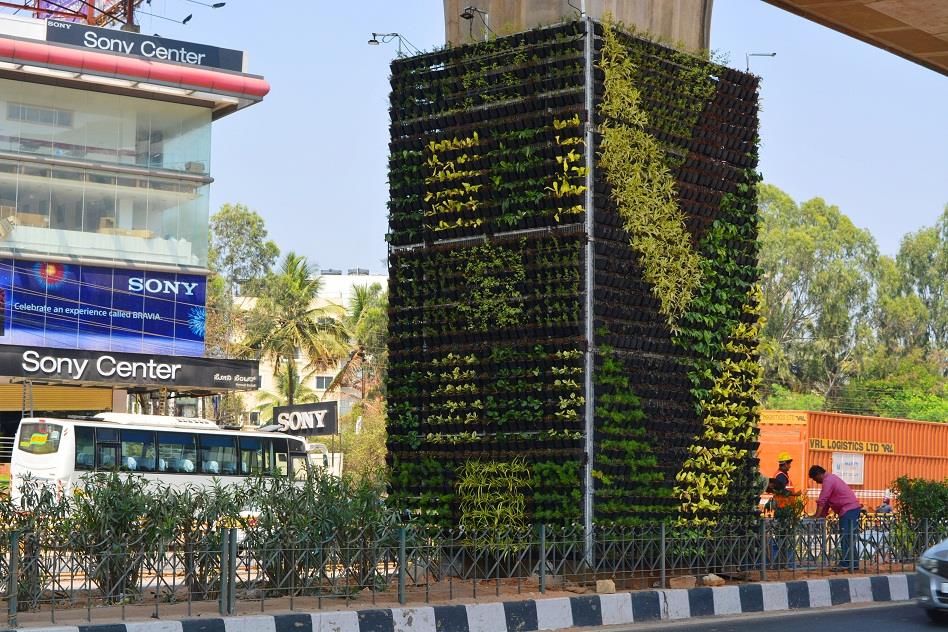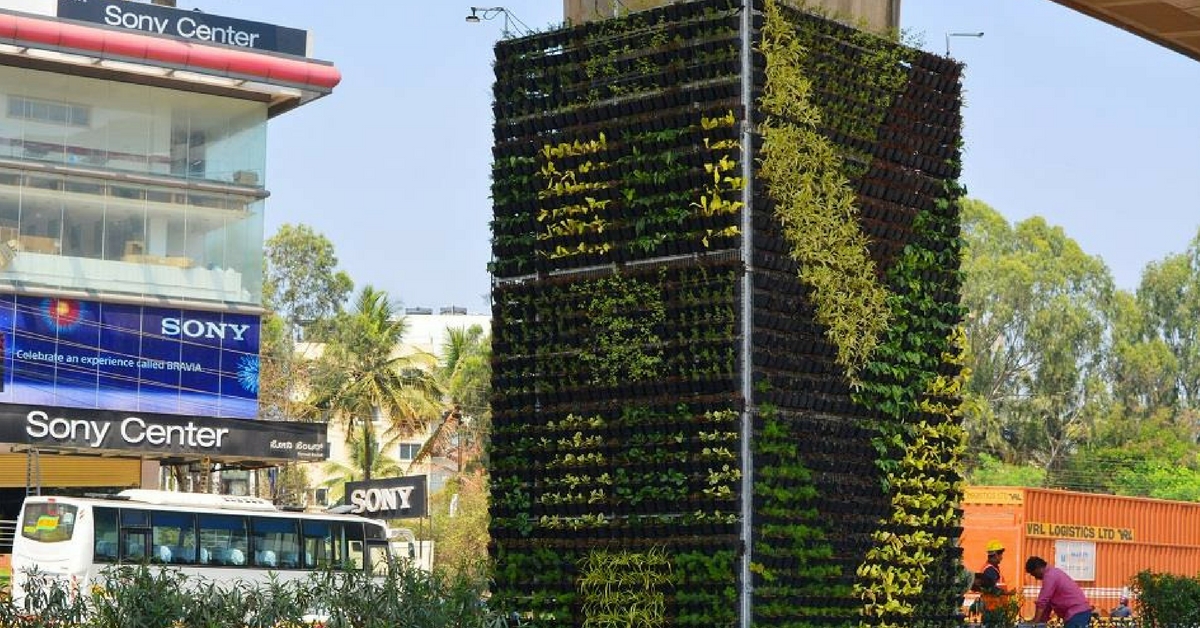Delhi Metro has transformed eight drab looking pillars along its elevated Blue Line between Mandi House and Pragati Maidan stations into beautiful green vertical gardens.
Not only are these vertical gardens improving its aesthetic appeal but also fighting air pollution!

The entire concept of transforming metro pillars into vertical gardens to fight pollution in addition to beautifying its surroundings was adopted in India after its implementation in Mexico City went viral on social media last year.
Called the ‘Mexico gardens,’ each square metre of these vertical gardens can generate oxygen supply sufficient for one individual’s year-long consumption. In fact, a four-storey high vertical garden can remove 130 grams of particulates from the air, filter 40 tonnes of greenhouse gases and process over 15 kg of harmful heavy metals.
In India, the Kochi Metro was the first among the Metrorail corporations to build vertical gardens in January 2017.
Bengaluru’s Namma Metro and Nagpur’s Mahametro followed suit in March and April the same year, respectively.
In Delhi, the New Delhi Municipal Council has been credited with the idea to replicate the model, who will also be responsible for its maintenance.
These vertical gardens in Delhi are located at the junction of Sikandra Road, Tilak Marg and Mathura Road.
The once lacklustre pillars are now covered with a mesh frame, where plants in small pots are mounted nearby, to give it a classic vertical garden look.
“We developed a frame around the metro pillars on which the vertical gardens have come up. We thought the pillars had a rather shabby look and thought of giving it a green cover.It is a small but good medium for increasing the green cover of Delhi,” NDMC chairman Naresh Kumar told TOI.
Read more: For 3 Years Now, These Chennai Folks Have Been Cleaning the Streets for Free!
These plants in the vertical garden are grown without soil using hydroponics, where they are supplied required nutrients in the right quantity through the water. Hydroponics uses 90 percent less water than conventional soil-based methods and requires low maintenance.
Bengaluru’s Namma Metro uses only 500 litres to water the plants on a single metro pillar, with the tank needing a refill only once in a month. It has also fitted its pillars with smart sensors which regulate the amount of water required by the plant. These sensors send alerts to pump up water levels when the water reaching the plants is less than required, or even when it is too acidic or alkaline.
The New Delhi Municipal corporation has declared that it has all the required machinery to maintain the plants year-round and will be using spraying machines and pumps to water the vertical gardens regularly.
“Vertical gardens on metro pillars is a unique idea, and DMRC will also explore the possibility of replicating it at other locations,” NDMC chairman Naresh Kumar told TOI.
Like this story? Or have something to share?
Write to us: contact@thebetterindia.com
Connect with us on Facebook and Twitter.
NEW: Click here to get positive news on WhatsApp!
We bring stories straight from the heart of India, to inspire millions and create a wave of impact. Our positive movement is growing bigger everyday, and we would love for you to join it.
Please contribute whatever you can, every little penny helps our team in bringing you more stories that support dreams and spread hope.

